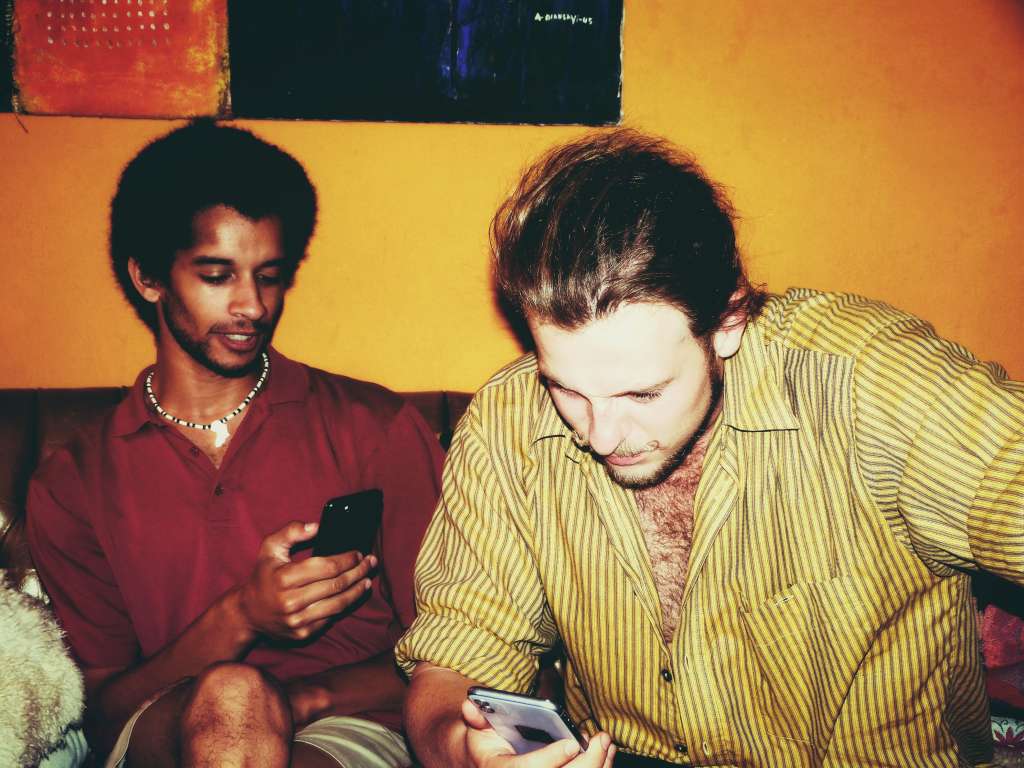Impatiently I looked on my phone for the tenth time that minute. I was waiting for a reply, feeling like my life depends on it. What I forgot in that moment and forget in all the moments like this one: Eagerly waiting for an awaited reply, inevitably leads to disappointment. Seemingly I have understood that some topics must be discussed in person, face-to-face in the literal sense. But which ones are they, and what if it´s just not possible to meet in person?

To tell my two-minded story of digital (mis-) communication, I begin with illustrating my comprehension of the core concepts of this essay. When speaking of “digital” communication I refer to the writing of messages, emails, blog entries and any other form of written content which is conveyed and consumed through the use of digital media. In this essay I will not investigate other, non-written forms of digital communication. “Communication” refers to those forms of written content where it is possible to comment or reply to a message. Like a message provoking immediate interaction or an entry on a blog or website, which only indirectly becomes communication when somebody comments on it.
This essay is no plea for the boycott or abandonment of digital communication and the technologies that support it, however it strives to depict that we must regard the topic, and the intention of messages when thinking about which medium we use to discuss them. Scrolling through my chats, on the search for what I call failed communication, I stumble upon many examples, mostly with people who are quite close to me. In the following I will name two examples, of many more, to convey my point. The first, I call the “obvious” example. As I arrive at the kindergarten to pick up my little brother, I here he has already been picked up. The message I got from my dad saying to pick him up, seemed clear to me, for me it read: “pick him up”. When speaking with my dad over the phone an irritating fact crystallized: the German imperative for “pick up” is literally the same as the word in the first form singular. One word often has various meanings, and sometimes two words are the same. The second example I call the “profound” example. In a relationship crisis with my partner, one of us was not able to talk on the phone so we tried to work it out via texting. What only later became clear is that not only was the problem so easily solved, the appropriate attention devoted, and the love felt when we finally talked it out in person, but the texting actually amplified the bad feelings one had in the moment. In a situation, experiencing sadness, anger, jealousy, and disappointment, the messages I received could have not been detailed and expressive enough. The naturally missing information was substituted by interpretations and reading between the lines. But in this short moment of darkness, the interpretations were just as dark. Instead of thinking in the best terms of the other, the dull, emotionless messages led to additional pain, by leaving tons of space to interpret the other´s messages. These two examples point to the difficulties in communicating digitally. They should show that it can be unproductive or even psychologically painful to use digital media for communication in some situations.
So what kind of topic and with what kind of intention does communication work well via digital media? As I scroll through various of my Telegram chats again, looking for examples of successful communication, I find messages containing very basic and limited information. The so called “limited” example: “Where are you?”, “When are you going to be there?”, and these sorts of messages. This limited information is conveyed just fine via texting. Another example, the “poetic” example, refers to artistic messages with limited interaction. A poem for my mother, a short story published on a blog. These messages usually provoke limited communication, because they can be commented, but the subject is narrow and the communication is asymmetric, meaning the participants do not start from the same point. One is the author and the other comments. In addition, these sort of messages live from the fact that they are open to interpretation. Due to this fact, it could even be desirable to share these artistic messages via digital media, since people may relate and interact to the art work in what ever way they want which produces real value for the receiver.

I acknowledge that much of what we say leaves room for interpretation by the receiver, face-to-face or via digital communication. Furthermore, is freedom of interpretation in many instances a positive and vital feature of texts. I also acknowledge that even in face-to-face communication the basis is not always even. But there are instances where it is better to wait to convey a message until you can meet the receiver face-to-face and feel the full meaning of the words said. No way around it, there is more to communication than spelled out words.


Recent Comments